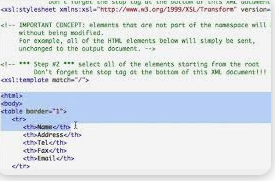Forex trading hours refer to the specific periods during which participants in the foreign exchange market are able to buy, sell, exchange, and speculate on currencies. The forex market operates 24 hours a day, five days a week, across various financial centers around the world, including Sydney, Tokyo, London, and New York. Understanding forex trading hours is crucial for traders as it influences trading strategies, market volatility, and the best times to trade different currency pairs. In this article, we will explore the key aspects of forex trading hours, including the major trading sessions, their characteristics, and how they impact trading activities.
Why are Forex Trading Hours Important?
Forex trading hours are crucial for several reasons, impacting trading strategies, market volatility, and overall profitability.
Firstly, forex trading hours determine market liquidity. The forex market operates 24 hours a day because trading sessions across different time zones overlap. These overlaps are when the market is most active, providing traders with higher liquidity and tighter spreads. For example, the overlap between the New York and London sessions, from 8 a.m. to noon EST, is known for the highest trading volume and significant price movements.
Secondly, different trading sessions exhibit unique characteristics and levels of volatility. The London session, for instance, is known for its high volatility and large trading volume, contributing significantly to global forex trades. This session often sets the trends that continue into the New York session. Conversely, the Sydney and Tokyo sessions, while still active, generally see lower volatility compared to their London and New York counterparts.
Lastly, understanding forex trading hours helps traders align their strategies with market conditions. Traders can plan their activities around the most active sessions to maximize their opportunities. For instance, those trading currency pairs involving the USD and EUR might find the overlap between the New York and London sessions particularly lucrative.
How Does the Forex Market Operate 24 Hours a Day?
The continuous operation of the forex market is made possible by the sequential opening of markets in different time zones around the world. This 24-hour cycle is segmented into four major trading sessions: Sydney, Tokyo, London, and New York.
The trading day begins with the Sydney session, opening at 5 p.m. EST and closing at 2 a.m. EST. Following Sydney, the Tokyo session starts at 7 p.m. EST and runs until 4 a.m. EST. The London session then opens at 3 a.m. EST and closes at noon EST, followed by the New York session, which operates from 8 a.m. to 5 p.m. EST.
These sessions overlap at various times, ensuring there is always an active forex market. For example, the overlap between the London and New York sessions is particularly significant, creating the highest trading volume and market activity. These overlaps allow traders to take advantage of the best trading opportunities, as the increased volume leads to more significant price movements and narrower spreads.
What are the Major Forex Trading Sessions?
The forex market is divided into four major trading sessions, each associated with the primary financial centers of Sydney, Tokyo, London, and New York.
- Sydney Session (5 p.m. to 2 a.m. EST):
- The trading week officially begins with the Sydney session. Although it is the smallest of the four major markets, it sees a lot of activity when the market reopens on Sunday. This session is characterized by relatively low volatility but provides an opportunity for early trading.
- Tokyo Session (7 p.m. to 4 a.m. EST):
- As the first major Asian trading center to open, the Tokyo session accounts for a significant portion of Asian forex trading. Major currency pairs traded during this session include USD/JPY and EUR/JPY. The Tokyo session is known for its liquidity, especially in the early hours when it overlaps with the Sydney session.
- London Session (3 a.m. to noon EST):
- The London session is the largest and most volatile forex trading session. It handles a significant portion of the daily forex volume and often sets the market trends for the day. The London session overlaps with both the Tokyo session (in the early hours) and the New York session (later in the morning), making it a prime time for trading.
- New York Session (8 a.m. to 5 p.m. EST):
- The New York session is crucial as it overlaps with the London session, creating the highest trading volume of the day. Movements in the U.S. stock markets and significant economic news releases often impact this session, making it a key period for trading major currency pairs like EUR/USD and GBP/USD.
Understanding the characteristics and overlaps of these sessions helps traders optimize their strategies and take advantage of the best trading opportunities.
How Do Forex Trading Hours Affect Trading Strategies?
Forex trading hours significantly influence trading strategies due to variations in market volatility, liquidity, and the impact of news releases across different sessions.
Volatility and Liquidity: Different trading sessions exhibit varying levels of volatility and liquidity, which are crucial for traders when planning their strategies. The London session, known for its high volatility and significant trading volume, offers numerous trading opportunities due to sharp price movements. In contrast, the Sydney session is characterized by lower volatility and liquidity, making it less attractive for traders seeking quick price changes.Traders who prefer high volatility might focus on the London and New York sessions, while those who prefer steadier markets might opt for the Asian sessions.
Overlap of Trading Sessions: The overlap between major trading sessions, such as the London-New York and Tokyo-London overlaps, creates periods of heightened market activity. These overlaps lead to increased liquidity and significant price movements, providing traders with better trading opportunities and tighter spreads. For example, the overlap between the London and New York sessions, from 8 a.m. to noon EST, is particularly notable for its high trading volume and volatility.Understanding these overlaps allows traders to plan their activities to capitalize on these peak periods.
Impact of News Releases: News releases can cause significant volatility in the forex market, affecting trading strategies depending on the timing of these events. Economic indicators, such as GDP reports, employment data, and interest rate decisions, are often released during specific trading sessions and can lead to rapid price movements. Traders need to be aware of the timing of these news releases and plan their trades accordingly to either capitalize on the volatility or avoid potential risks.
What is the Best Time to Trade Forex for Major Currency Pairs?
The optimal time to trade forex for major currency pairs depends on the specific characteristics of the trading sessions and the overlap periods.
London and New York Sessions: The overlap between the London and New York sessions, from 8 a.m. to noon EST, is considered the best time to trade major currency pairs like EUR/USD, GBP/USD, and USD/CHF. This period sees the highest trading volume and liquidity, leading to narrower spreads and more significant price movements. The increased activity from both the European and North American markets provides ample trading opportunities and better execution of trades.
Tokyo and London Overlap: Another favorable time for trading major currency pairs, particularly those involving the Japanese yen, is the overlap between the Tokyo and London sessions. This overlap, from 3 a.m. to 4 a.m. EST, sees increased activity and volatility for pairs like USD/JPY and EUR/JPY, as both markets are active during this period. Although this overlap is shorter, it still offers opportunities for traders who focus on these currency pairs.
Sydney and Tokyo Sessions: For traders interested in pairs involving the Australian dollar and the New Zealand dollar, the Sydney and Tokyo sessions provide good trading conditions. The overlap between these sessions, from 2 a.m. to 4 a.m. EST, sees increased liquidity and activity for pairs like AUD/USD and NZD/USD. Although these sessions are generally quieter compared to the London and New York sessions, they still offer opportunities for traders focusing on these specific currencies.
How Do Forex Trading Hours Vary Across Different Time Zones?
Forex trading hours vary significantly across different time zones, creating a continuous market that operates 24 hours a day, five days a week.
Sydney Session (5 p.m. to 2 a.m. EST): The trading day begins with the Sydney session, marking the start of the forex market week. This session is the least volatile and has lower trading volume, making it a quieter period for trading. However, it is important for traders dealing with the Australian dollar and New Zealand dollar.
Tokyo Session (7 p.m. to 4 a.m. EST): Following the Sydney session, the Tokyo session kicks off, contributing significantly to Asian market activity. This session sees more volatility and liquidity, particularly for currency pairs involving the Japanese yen. Major financial hubs like Hong Kong and Singapore also become active during this period, adding to the market activity.
London Session (3 a.m. to noon EST): The London session is the most active and volatile, with the highest trading volume among all sessions. It overlaps with both the Tokyo and New York sessions, making it a critical period for trading major currency pairs. The session’s high volatility provides numerous trading opportunities for day traders and scalpers.
New York Session (8 a.m. to 5 p.m. EST): The New York session overlaps with the London session, creating a period of significant trading activity and volatility. This session is vital for traders focusing on the U.S. dollar and major currency pairs. Economic news releases from the U.S. often impact this session, leading to rapid price movements and increased trading opportunities.
Understanding these variations in forex trading hours helps traders optimize their strategies and take advantage of the most active and volatile periods in the market.
What are the Overlapping Forex Trading Sessions and Why Do They Matter?
The overlapping forex trading sessions are critical periods in the forex market when two major financial centers are open simultaneously. These overlaps result in increased trading activity, higher liquidity, and greater volatility, which are ideal conditions for forex traders.
London-New York Overlap (8 a.m. to 12 p.m. EST): This is the most significant overlap, as it involves the two largest financial centers in the world. During this period, about 70% of all forex trades occur, offering the highest liquidity and tightest spreads. This overlap is particularly active for currency pairs like EUR/USD, GBP/USD, and USD/CHF, making it the best time to trade these pairs due to the high trading volume and significant price movements.
Tokyo-London Overlap (3 a.m. to 4 a.m. EST): Although shorter and less volatile than the London-New York overlap, this period still provides valuable trading opportunities. The overlap between the Asian and European markets leads to increased activity, especially for pairs involving the Japanese yen, such as USD/JPY and EUR/JPY. This one-hour window can be particularly beneficial for traders who are active during the early European hours.
Sydney-Tokyo Overlap (2 a.m. to 4 a.m. EST): This overlap sees increased trading activity for the Australian and Japanese markets. While it is not as volatile as the London-New York overlap, it offers good liquidity and trading opportunities for pairs like AUD/USD and NZD/USD. Traders focusing on these currencies can benefit from the active trading during this period.
How Do Public Holidays Impact Forex Trading Hours?
Public holidays significantly impact forex trading hours by reducing market activity and liquidity. During these periods, the forex market can become quieter, leading to wider spreads and less favorable trading conditions.
Lower Liquidity and Volatility: On public holidays, the financial centers in major forex trading cities like London, New York, and Tokyo may be closed or operate at reduced capacity. This results in lower trading volumes and reduced liquidity. For instance, during Christmas and New Year holidays, many traders take time off, leading to thinner market conditions and higher volatility due to fewer participants .
Wider Spreads: With reduced market activity, brokers often widen spreads to manage the lower liquidity risk. This makes trading more expensive and can impact the profitability of trades. For example, spreads on major currency pairs can widen significantly during U.S. public holidays like Independence Day or Thanksgiving.
Potential for Unexpected Price Movements: While lower liquidity can reduce the likelihood of significant market moves, it can also result in erratic price behavior if a large trade is executed. Traders need to be cautious and may choose to avoid trading during major public holidays or adjust their strategies to account for the lower liquidity and potential for unexpected price movements..
What Tools Can Help Track Forex Trading Hours Effectively?
Several tools can help traders keep track of forex trading hours and optimize their trading strategies based on market activity.
Forex Market Hours Clock: This tool provides a visual representation of the current trading sessions across different financial centers. By setting the local timezone, traders can easily see which markets are open and when overlaps occur. Websites like BabyPips and Forex Factory offer market hours clocks that are highly recommended by traders for their ease of use and accuracy.
Economic Calendars: Economic calendars list important events, news releases, and holidays that can affect forex trading. These calendars help traders plan their activities around significant events that might cause market volatility. Websites such as Investing.com and Forex Factory provide detailed economic calendars with real-time updates.
Trading Platforms: Many forex trading platforms, such as MetaTrader 4 (MT4) and MetaTrader 5 (MT5), include built-in tools to track market hours and alerts for session changes. These platforms can help traders stay informed about market openings, closings, and overlaps, ensuring they can make timely and informed trading decisions.
By utilizing these tools, traders can enhance their understanding of forex market hours, optimize their trading schedules, and improve their overall trading performance.
What are the Risks Associated with Forex Trading During Different Hours?
Forex trading involves various risks that can vary depending on the trading hours. Understanding these risks helps traders to strategize and manage their trades effectively.
Volatility and Liquidity: Different trading hours come with varying levels of volatility and liquidity. During the overlap of major sessions, such as the London-New York overlap, the market experiences high liquidity and significant price movements. However, during off-hours, like the Sydney-Tokyo overlap, liquidity is lower, which can lead to wider spreads and increased slippage. Lower liquidity can make it difficult to execute trades at desired prices, increasing the risk of loss.
Leverage Risks: Forex trading often involves leverage, which allows traders to control larger positions with a smaller amount of capital. While leverage can amplify profits, it also magnifies losses. During volatile market conditions, the use of leverage can lead to substantial losses, sometimes exceeding the initial investment. Traders must use leverage cautiously, especially during high-volatility periods.
Market Manipulation and Unexpected Events: During less active trading hours, the forex market can be more susceptible to manipulation by large players due to lower liquidity. Additionally, unexpected news events, such as geopolitical developments or natural disasters, can cause sudden and significant price movements, catching traders off guard. Effective risk management strategies, including setting stop-loss orders and staying informed about global events, are crucial to mitigate these risks.
How Can You Optimize Your Trading Schedule for Maximum Profit?
Optimizing your trading schedule involves understanding the best times to trade and aligning your strategies with market activity.
Trading During Overlaps: The overlaps between major trading sessions, such as the London-New York overlap (8 a.m. to 12 p.m. EST), offer the highest liquidity and trading volume. This period is ideal for trading major currency pairs like EUR/USD and GBP/USD due to the significant market activity and tighter spreads. Identifying these overlaps and focusing your trading during these peak times can enhance profitability.
Aligning with Economic Events: Monitoring and trading around major economic events and news releases can provide opportunities for significant price movements. Economic calendars that list important events, such as GDP reports, employment data, and central bank announcements, can help you plan your trades to capitalize on market volatility caused by these events. Staying informed and reacting swiftly to news can lead to profitable trades.
Utilizing Trading Tools: Leveraging tools like market hours clocks, economic calendars, and trading platforms with built-in alerts can help you keep track of trading sessions and important events. These tools ensure that you are trading during the most opportune times and can help you avoid periods of low activity and high risk.
What is the Role of High-Volume Trading Periods in Forex?
High-volume trading periods are critical in the forex market as they offer enhanced liquidity and more trading opportunities.
Increased Liquidity and Tighter Spreads: During high-volume trading periods, such as the London-New York overlap, the market experiences increased liquidity, resulting in tighter spreads and better trade execution. High liquidity ensures that traders can enter and exit positions with minimal slippage, making trading more efficient and less costly.
Significant Price Movements: High trading volumes lead to significant price movements, providing ample opportunities for profit. These periods are characterized by more pronounced market trends and volatility, which are favorable for traders who rely on technical analysis and trend-following strategies. The increased activity during these periods helps traders identify and capitalize on market trends more effectively.
Optimal Trading Conditions: High-volume periods typically coincide with the overlap of major trading sessions, such as the London and New York sessions. These overlaps create an optimal trading environment with the highest market participation, making it the best time to trade major currency pairs. Understanding and targeting these high-volume periods can enhance your trading strategy and increase the likelihood of profitable trades.
By understanding and leveraging these aspects of forex trading hours, you can optimize your trading strategies, manage risks more effectively, and enhance your overall trading performance.
Conclusion
Understanding forex trading hours and their impact is crucial for anyone looking to succeed in the forex market. Forex trading is unique in its 24-hour operation, providing traders around the world with the flexibility to trade at almost any time. However, not all trading hours are created equal, and recognizing the most opportune times to trade can significantly enhance profitability.
Forex trading hours are segmented into four major sessions: Sydney, Tokyo, London, and New York. Each session has distinct characteristics, including varying levels of liquidity and volatility, which influence trading strategies and outcomes. The overlap between sessions, particularly the London-New York overlap, offers the highest liquidity and trading volume, making it the ideal time for trading major currency pairs.
The risks associated with forex trading also vary with different trading hours. High volatility and liquidity during peak hours can provide substantial opportunities but also come with increased risks, such as significant price swings and potential slippage. Effective risk management, including the use of leverage prudently and staying informed about global events, is essential to navigate these challenges successfully.
By optimizing your trading schedule to align with high-volume trading periods and leveraging trading tools like economic calendars and market hours clocks, traders can enhance their chances of success. Monitoring economic events and news releases further allows traders to capitalize on market movements driven by these factors.
In conclusion, mastering forex trading hours and their nuances can lead to more informed trading decisions, better risk management, and improved profitability. Understanding when to trade, recognizing the risks, and optimizing your strategies around peak trading times are critical components for achieving success in the dynamic and ever-evolving forex market.
LinkedIn Description
🌟 Master the Forex Market: Optimize Your Trading with Expert Insights! 🌟
Unlock the secrets to successful forex trading with our latest blog on Forex Trading Hours! 📊 Learn how to navigate different trading sessions, manage risks, and optimize your strategies for maximum profit. Whether you’re a seasoned trader or just starting out, this comprehensive guide will enhance your trading performance.
👉 Dive into high-volume trading periods 👉 Understand session overlaps and their significance 👉 Implement effective risk management strategies
Stay ahead in the forex market and make informed trading decisions. Read now! 🔥
#ForexTrading #FinancialMarkets #TradingHours #ForexStrategy #RiskManagement #MarketAnalysis #FinancialFreedom
Facebook Description
📈 Maximize Your Forex Trading Success with Our Expert Guide! 📈
Are you ready to take your forex trading to the next level? Our latest blog on Forex Trading Hours reveals the best times to trade, key strategies for different sessions, and essential risk management tips. Whether you’re a pro or a beginner, this guide has something for everyone!
💡 Learn about: 🔹 Major trading sessions and overlaps 🔹 Optimizing your trading schedule 🔹 Managing risks effectively
Don’t miss out on these valuable insights! Click the link to read more and enhance your trading strategy today. 💪
#Forex #Trading #FinancialSuccess #ForexMarket #TradingTips #MarketHours #Finance #Investment
Instagram Description
📊✨ Boost Your Forex Trading Game! ✨📊
Discover the secrets to successful forex trading in our latest blog! Whether you’re new to forex or an experienced trader, understanding trading hours can make all the difference. Learn about the best times to trade, how to manage risks, and optimize your trading schedule for maximum profit.
💡 Key Takeaways: 🔹 Best trading sessions & overlaps 🔹 Effective risk management 🔹 High-volume trading periods
Click the link in bio to read more and start trading smarter today! 🚀
#ForexTrading #MarketHours #TradingStrategy #FinanceTips #Investment #ForexMarket #RiskManagement #FinancialFreedom #TraderLife












